During my first week in the Balkans I definitively concluded not to visit Belgrade, the capital of Serbia and former capital of Yugoslavia, on this trip. I did so for three reasons: (1) as I've mentioned I came up in school with a number of Bosnian fellows and I felt this a nice subtle protest of the policies coming from Belgrade during the early 90's; (2) everyone I talked to couldn't wait to tell me how freakin great Belgrade was, which eventually just turned me off to ever going there; and (3) practically, it was totally out of my way.
But I didn't want to eschew Serbia entire, so a compromise was required. I needed a place I could get to with relative ease from Skopje, one I could leave from and get to Sophia, Bulgaria, and one that had enough things worth seeing to justify my visit. I kicked around a number of possibilities but when I discovered that Nis had something called the Skull Tower, an aptly named structured fashioned with actual human skulls, it was too much to turn down. But on the way from Skopje to Nis, a curious thing happened which I scribbled down at the time:
"On the bus ride from Macedonia to Serbia we stop at a town a few minutes from the Serbia border. A number of people get on including a man and woman and their three children. Obviously there are no tickets for the children and since the bus is full they end up in the parents' laps. The woman is next to me with the girl in her lap and one of the boys wedged in between us. The boy keeps turning around and staring at me- making an already slightly weird situation very uncomfortable.
At the border we are detained for what feels like an absurdly long time (in actuality about an hour). Finally once all passports have been returned it is revealed that the man, woman, and kids are wanted for questioning by the authorities. They are taken off the bus. We sit and wait. And wait. Finally, the verdict arrives. They are yanked off the bus. We leave them at the border and roll on into the rain. At the next checkpoint there was a long line. The scanning went faster, however, but all told it took us two hours to get through the border to Serbia." I ended up getting into Nis pretty late and had enough time only for a cursory glance around my surrounding area, which resulted in a nice photo of the fortress at night:
The next morning I was up early to attack the four sights I wanted to see: (1) the Nis concentration camp; (2) the Fortress; (3) the Skull Tower; and (4) Mediana. But first, I needed to head down to the train station to purchase my ticket for the overnight train to Sophia departing around 3am. On the way to the station I noticed that the horse and buggy is very much still in play on the streets of Nis:
On the 20 or so minute walk down to the train station you'll pass a number of old communist block buildings that in the early morning haze stare back at you menacingly. It made me feel a bit uneasy, especially as a brisk wind had blown in the first hints of Autumn just that morning. As you approach the train station you'll notice several derelict old trains and engines, occupying sections of track at what is undoubtedly their final resting place.
At the station I am informed by a very grump woman that I have to buy a ticket for the night train at that window for 9 euros. Then, aboard the train, I can buy a ticket for the sleeper car, provided they are running one, it isn't full, and I can locate it and the person to pay. I noted "we'll see how this goes..." I made my way back up toward the hostel and decided to visit the concentration camp first as it was apparently prone to closing early without warning. It's hidden up the hill and maybe a kilometer away from the Fortress. It really takes you by surprise as you walk past a residential building and then suddenly you see this:
The camp operated from 1941 through 1944 and it is estimated that around 12,000 of the 30,000 people that went through this camp were executed- most up on the hill at Bubanj where there is now a memorial. The camp itself was somber as expected. An interesting note, they have left almost all of the original structures from 1994 intact, including the wooden guard towers.
Although I don't think you are technically supposed to, if you are intrepid and sly enough you can climb the old concrete towers in the corner for a view of the entire site. I don't recommend it though because the stairs are wooden and many were broken through. I was about halfway up when I determined I might not be able to get back down without crashing to the bottom. I did make it, however, and here is the layout of the camp, the building on the left being the barracks and the right was for administration.
Wanting to see something a bit less grim, I made my way from the camp up toward the Fortress. Along the way I had the following thought about the suddenly chilly weather: "today in Nis is the first time I've worn my long sleeve shirt since arriving in the Balkans. It's about 60 degrees, overcast, with a cool breeze rustling through the city. The trees have just started to change. I love these early autumn days- that light brisk wind. While it's always a bit sad to say goodbye to summer, the fall brings with it the excitement of a new year and winter festivities.
And for me, it always makes me reminiscent. The smell of burning wood conjures up memories of camping trips in the Appalachins. The cool air and grey skies remind me of home. The start of school, raking leaves, those crisp October nights at UNC, and the coming of my favorite holiday- Halloween. Reminds me of seeing old friends again, the end of summer work, and switching from A/C to simply cruising with the windows down. On days like this I feel a bit homesick."
Meanwhile I had made my way to the Fortress. To be honest, there's not a ton to see here. They have modernized the whole entrance with restaurants and cafes and there isn't a ton to see walking along the walls. From right above the entrance you do get a nice view of the bridge to the main pedestrian square of the city.
Since the Fortress walls are so large, they have had to build the city around them as best they can. As such, the main market backs right up to it, as do several other buildings. The most unique use of the space in my mind, however, was the conversion of one section of the moat near the rear of the fortress into a basketball court complete with stands. This must have been built during the communist regime as it is in sore need of repairs these days.
I split the Fortress and, thoroughly enjoying the fall weather, I made my way down one of the main avenues toward the Skull Tower. Probably a 40 minute or so walk. Along the way, evidence of the communist architecture style strikes out and bashes you right in the face.
It's amazing to me how it is so uniformly drab. Staggering. You have to pay to enter the Skull Tower (I think it was the equivalent of a euro), and the tower itself is now permanently enclosed by an outer-chapel-like structure.
But pictures of the Skull Tower are completely useless without some context, so here it is. In 1804 the former Kingdom of Serbia initiated the first uprising against the Ottoman Empire. On May 31, 1809, Stevan Sinđelić led his Serbian insurrection troops against the Ottoman army nearby Nis. The battle resulted in a devastating defeat for the Serbian resistance, however, rather than surrender to the Turks, Stevan ordered his own gunpowder stores to be fired up killing the himself and the remainder of his troops as well as temporarily halting the Turkish advance. While a disastrous loss for Serbia, the battle is held in very high esteem in Serbia because the sacrifices made in resisting the Turks.
After the battle the Turkish commander Hursid Pasha, in a show of extreme barbarism, ordered the decapitation and scalping of the dead Serbian soldiers. The scalps were sent to the sultan in Istanbul as proof of the victory. As a sign of the decimation of the Serbian troops and as a monument to the deterrent of future uprisings, Pasha ordered a tower constructed from 952 of the skulls with the skull of Stevan to be placed at the top. The tower has stood since then, however, many of the skulls have deteriorated due to weather conditions or have been removed by the families. Today only 58 skulls remain, but those that do and the gaps of the skulls that don't provide an eerie reminder of the military power and influence that once was the Ottoman Empire.
My final stop was to be Mediana, birthplace of the great Emperor Constantine, however, the complex was closed for the day (random early closing). I did manage to snap a picture of the area but sadly, none of the villa and museum.
With some daylight still to spare I took a longer stroll through the main part of the city and happened upon the Orthodox Cathedral of Holy Trinity. The outside was impressive enough but inside the Cathedral was exceptional. There are dozens upon dozens of frescoes covering nearly every bit of flat space. Additionally, cast iron chandeliers hang from giant marble columns and, as always, you'll find Orthodox worshippers praying standing up.
Since I had a couple of hours to kill before my audaciously planned 3am train to Sofia, I took refuge in the hostel garden/bar area where, for the first time since Toulouse, I tuned in for some sports. It was Sunday and the Steelers were on. So from a table in a garden in Nis, Serbia, I watched the black and gold army pound the Jets into the ground before packing up and making my way to the train station in what turned out to be a downpour.
My only hope was that at least the train ride would be peaceful and restful. Turns out it was neither.
Although I don't think you are technically supposed to, if you are intrepid and sly enough you can climb the old concrete towers in the corner for a view of the entire site. I don't recommend it though because the stairs are wooden and many were broken through. I was about halfway up when I determined I might not be able to get back down without crashing to the bottom. I did make it, however, and here is the layout of the camp, the building on the left being the barracks and the right was for administration.
Wanting to see something a bit less grim, I made my way from the camp up toward the Fortress. Along the way I had the following thought about the suddenly chilly weather: "today in Nis is the first time I've worn my long sleeve shirt since arriving in the Balkans. It's about 60 degrees, overcast, with a cool breeze rustling through the city. The trees have just started to change. I love these early autumn days- that light brisk wind. While it's always a bit sad to say goodbye to summer, the fall brings with it the excitement of a new year and winter festivities.
And for me, it always makes me reminiscent. The smell of burning wood conjures up memories of camping trips in the Appalachins. The cool air and grey skies remind me of home. The start of school, raking leaves, those crisp October nights at UNC, and the coming of my favorite holiday- Halloween. Reminds me of seeing old friends again, the end of summer work, and switching from A/C to simply cruising with the windows down. On days like this I feel a bit homesick."
Meanwhile I had made my way to the Fortress. To be honest, there's not a ton to see here. They have modernized the whole entrance with restaurants and cafes and there isn't a ton to see walking along the walls. From right above the entrance you do get a nice view of the bridge to the main pedestrian square of the city.
Since the Fortress walls are so large, they have had to build the city around them as best they can. As such, the main market backs right up to it, as do several other buildings. The most unique use of the space in my mind, however, was the conversion of one section of the moat near the rear of the fortress into a basketball court complete with stands. This must have been built during the communist regime as it is in sore need of repairs these days.
I split the Fortress and, thoroughly enjoying the fall weather, I made my way down one of the main avenues toward the Skull Tower. Probably a 40 minute or so walk. Along the way, evidence of the communist architecture style strikes out and bashes you right in the face.
It's amazing to me how it is so uniformly drab. Staggering. You have to pay to enter the Skull Tower (I think it was the equivalent of a euro), and the tower itself is now permanently enclosed by an outer-chapel-like structure.
But pictures of the Skull Tower are completely useless without some context, so here it is. In 1804 the former Kingdom of Serbia initiated the first uprising against the Ottoman Empire. On May 31, 1809, Stevan Sinđelić led his Serbian insurrection troops against the Ottoman army nearby Nis. The battle resulted in a devastating defeat for the Serbian resistance, however, rather than surrender to the Turks, Stevan ordered his own gunpowder stores to be fired up killing the himself and the remainder of his troops as well as temporarily halting the Turkish advance. While a disastrous loss for Serbia, the battle is held in very high esteem in Serbia because the sacrifices made in resisting the Turks.
After the battle the Turkish commander Hursid Pasha, in a show of extreme barbarism, ordered the decapitation and scalping of the dead Serbian soldiers. The scalps were sent to the sultan in Istanbul as proof of the victory. As a sign of the decimation of the Serbian troops and as a monument to the deterrent of future uprisings, Pasha ordered a tower constructed from 952 of the skulls with the skull of Stevan to be placed at the top. The tower has stood since then, however, many of the skulls have deteriorated due to weather conditions or have been removed by the families. Today only 58 skulls remain, but those that do and the gaps of the skulls that don't provide an eerie reminder of the military power and influence that once was the Ottoman Empire.
My final stop was to be Mediana, birthplace of the great Emperor Constantine, however, the complex was closed for the day (random early closing). I did manage to snap a picture of the area but sadly, none of the villa and museum.
With some daylight still to spare I took a longer stroll through the main part of the city and happened upon the Orthodox Cathedral of Holy Trinity. The outside was impressive enough but inside the Cathedral was exceptional. There are dozens upon dozens of frescoes covering nearly every bit of flat space. Additionally, cast iron chandeliers hang from giant marble columns and, as always, you'll find Orthodox worshippers praying standing up.
Since I had a couple of hours to kill before my audaciously planned 3am train to Sofia, I took refuge in the hostel garden/bar area where, for the first time since Toulouse, I tuned in for some sports. It was Sunday and the Steelers were on. So from a table in a garden in Nis, Serbia, I watched the black and gold army pound the Jets into the ground before packing up and making my way to the train station in what turned out to be a downpour.
My only hope was that at least the train ride would be peaceful and restful. Turns out it was neither.
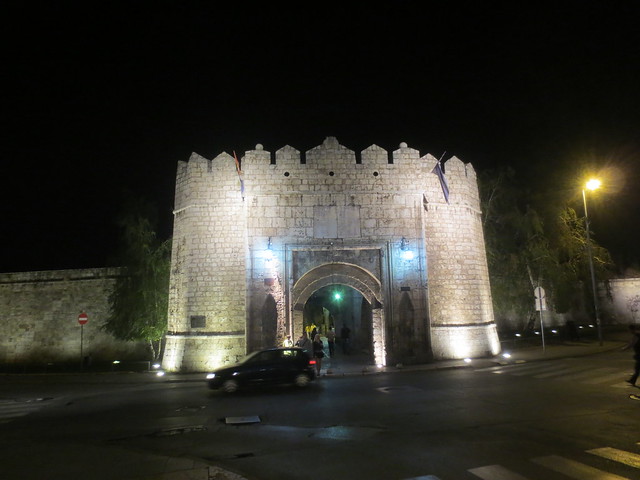
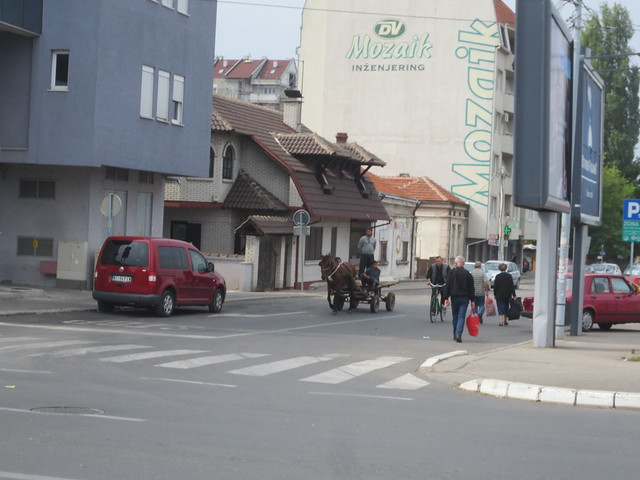
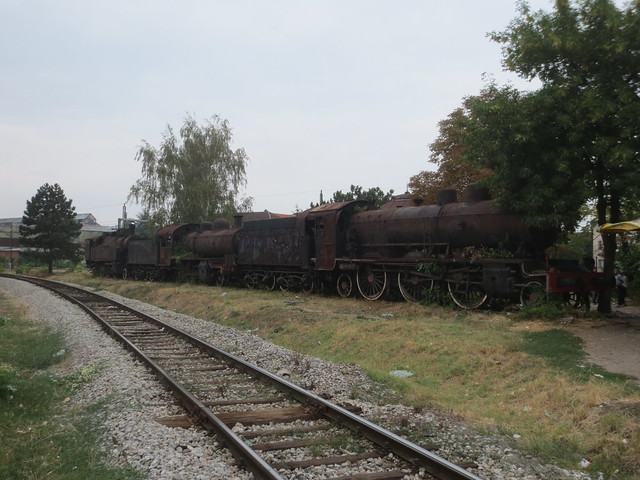
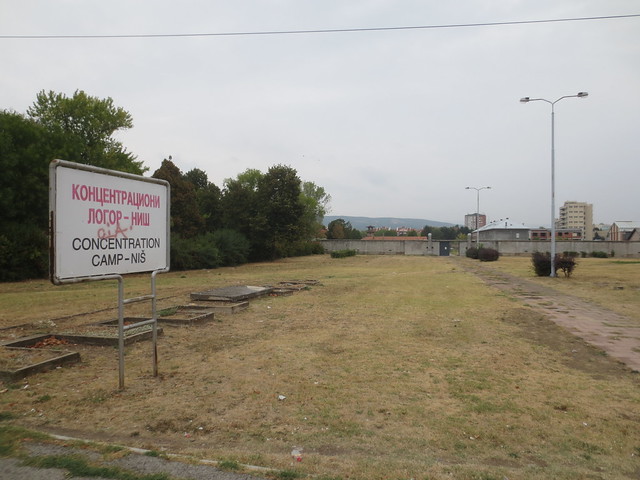
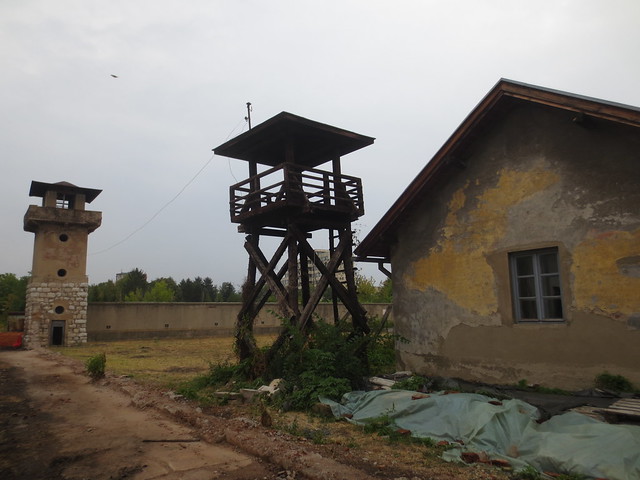
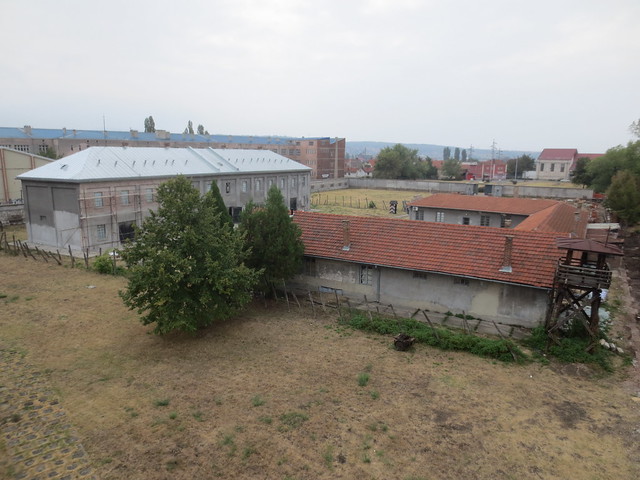
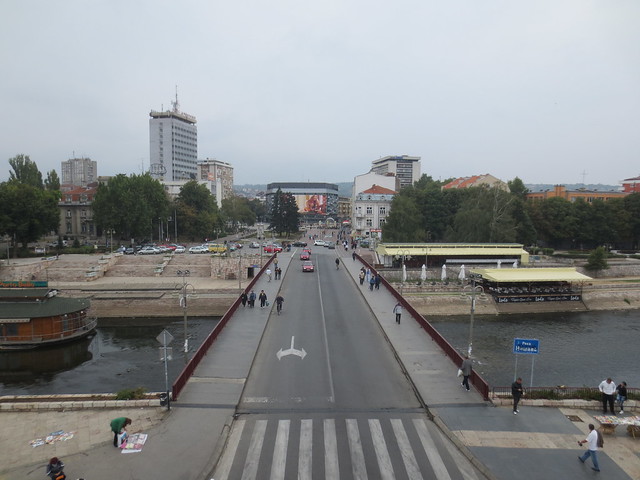
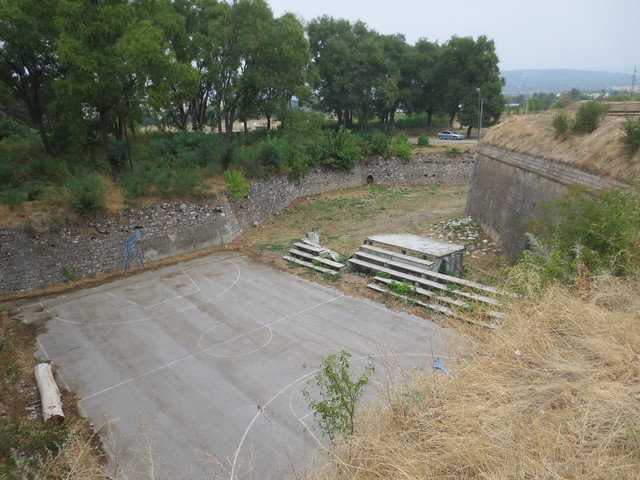
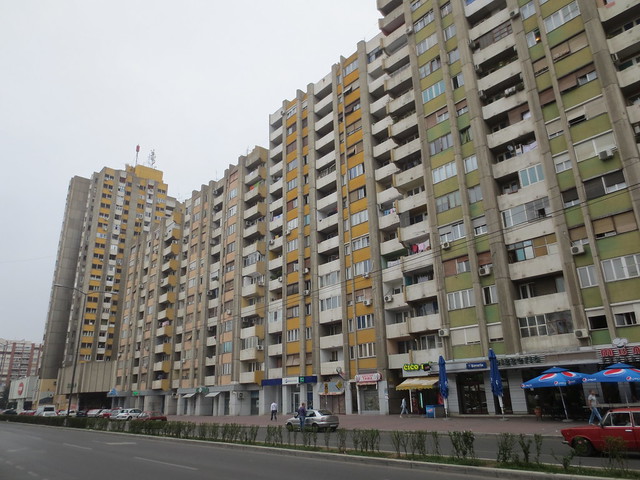

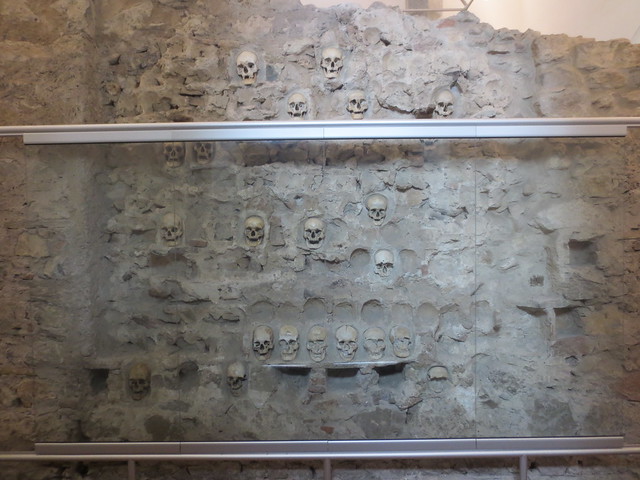
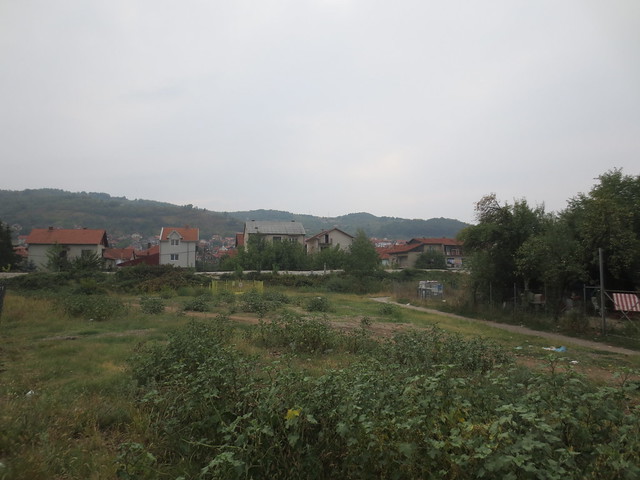
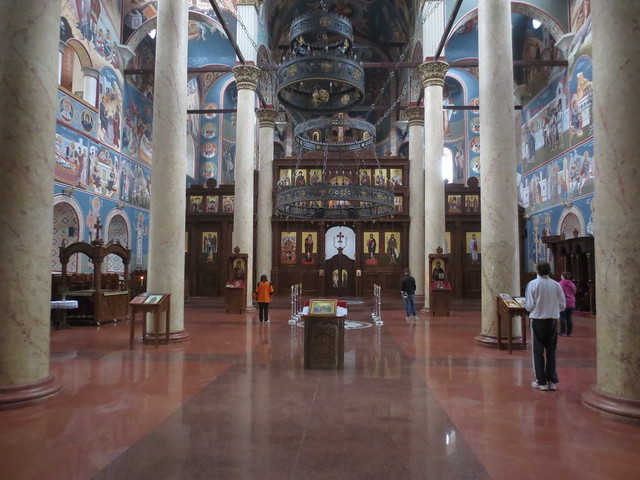

Very, very interesting read Mike, thanks. will be in Nis in Feb 2013. were you alone on this trip?
ReplyDeleteThank you. Yes I was alone although it's quite easy to make friends in Europe. Best of luck on your trip, cheers!
ReplyDelete